Bishamondo-Monzeki is a temple of the Tendai sect of Buddhism. It is a historic old temple which shows
its high status and rustic charm of the temple on a hillside. It worships Bishamonten as its principal
image.
Bishamondo is named after this deity.
Bishamondo was built by the order of Emperor Monmu in 703. At the beginning it was placed on izumoji bridge,
to the north of Kyoto Gosho, and initially called Izumoji Temple on Mt.Goho. After repeated wars, it was
rebuilt in Yamashina-Anshu in 1665.
The principal image of Bishamonten was carved by Dengyo Daishi Saicho himself, the founder of Tendai
sect,who founded Enryakuji Temple on Mt. Hiei. It is said that the statue was made of the surplus wood
after
making the statue of Yakushi Nyorai in Enryakuji Temple Konponchudo Hall. Worshippers are said to be
blessed
with prosperous trade and safety of their family.
The halls in the temple are valuable architectural structures in the modern age in Japan.
Many of them are designated as tangible cultural properties of Kyoto. The temple is located on the
hillside overlooking Yamashina Basin, and its cherry blossoms in spring and autumn leaves in fall are
loved by local people in Kyoto.
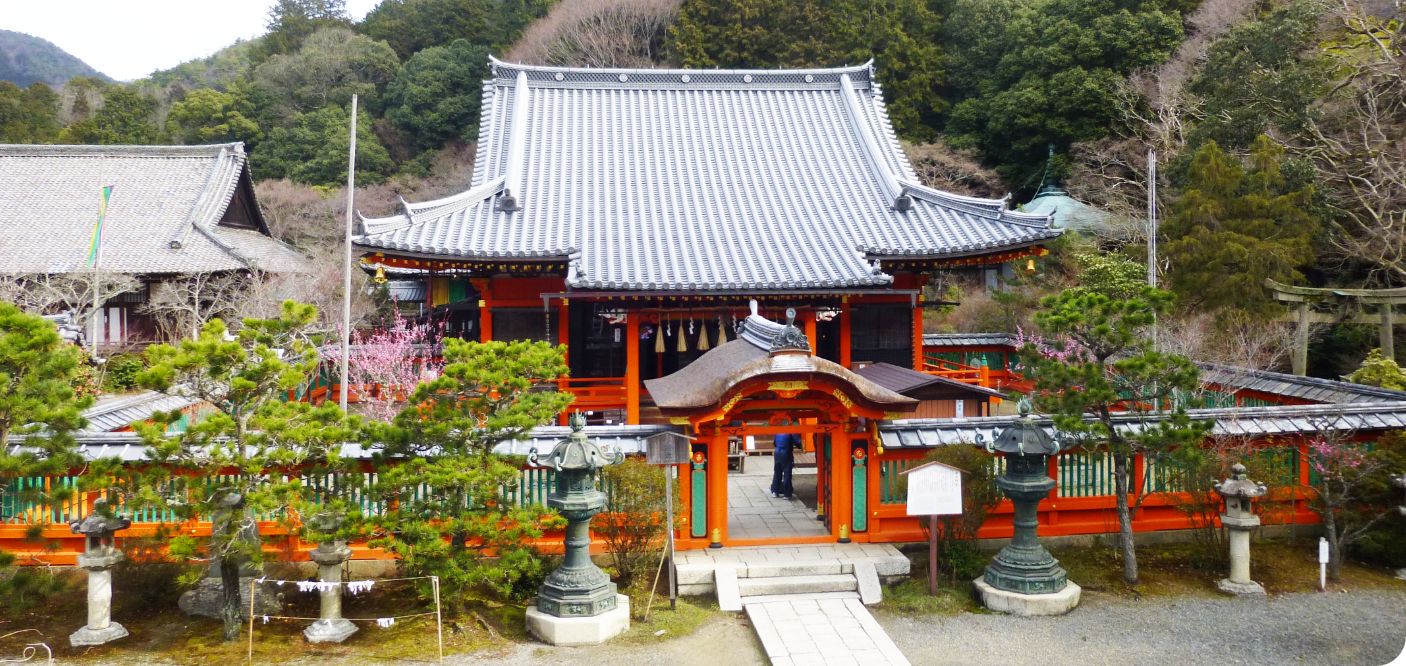
March to Nov
9:00 am〜4:30 pm
(Gates are closed at 5:00
pm)
Dec to Feb
9:00 am〜4:00 pm
(Gates are closed at 4:30 pm)
※goshuin order until 4:00pm (Dec to Feb until 3:30pm)
Adults
Children(13-18 years old)
Children(7-12 years old)
700 yen
400 yen
300 yen
Children under 6 years old are admitted free of charge.
18 Anshuinariyamacho, Yamashina-ku, Kyoto, 607-8003, Japan
Nearest Transport :
20min walk from Yamashina Station, JR and Tozai subway line or Keihan Yamashina Station, Keihan Keishin
line.
Google map
To help everyone enjoy their visit and to keep traffic flowing smoothly, we ask that you avoid driving your personal vehicle when visiting the temple during the cherry blossom and fall foliage seasons.
Public transportation or taxis are highly recommended during these times. If driving is necessary, please use one of the paid parking lots available nearby.
Note: Large vehicles such as buses cannot access the temple due to Kyoto City road rules and low clearance under JR train overpasses.
No photography and no video inside the temples except the garden and the precincts.
No tripod or similar equipments for taking photograph or video in the precincts.
No selfie rod in the temples.
No foods and drinks in the precincts.
No smoking in the precincts.
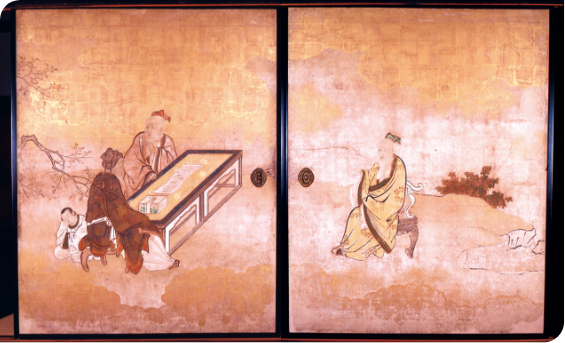
Former residence of the Emperor Gosai in Kyoto Gosho was given to this
his
sixth son, Cloistered Imperial Prince Koben, who relocated it temple in 1693.
All of the 116 partition paintings were painted by Surugadai School skill used here is called “Reverse Perspective Representation”, which tricks viewers into feeling as if they were standing at the center of all the paintings.
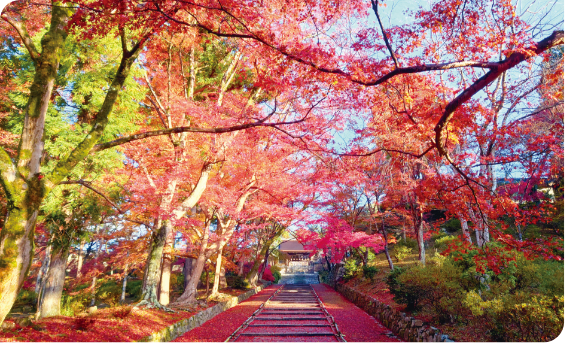
The main gate with cypress bark roof donated by the Emperor Gosai. It has been unopened except when the Emperor or his deputy visited or the inaugural ceremonies of the chief priests of this temple were held.
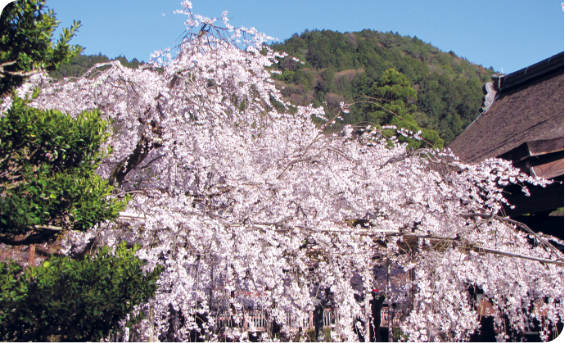
The large Drooping cherry-tree reaching 30 meters in front of Shinden is over 150 years old. It reaches full bloom around April.
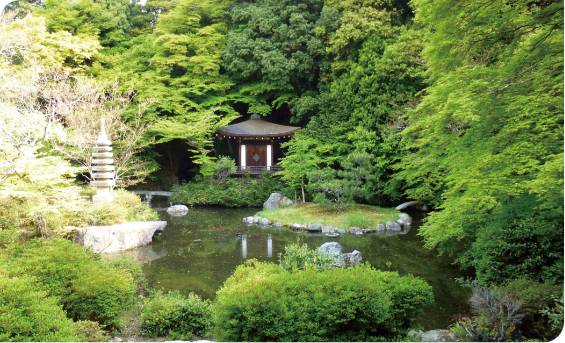
A circuit style garden, in the Edo period. It’s an outstanding garden which has kameshima(Tortoise stone), Chidoriishi(Plover stone), Zazenseki (Meditation stone) on the pond.
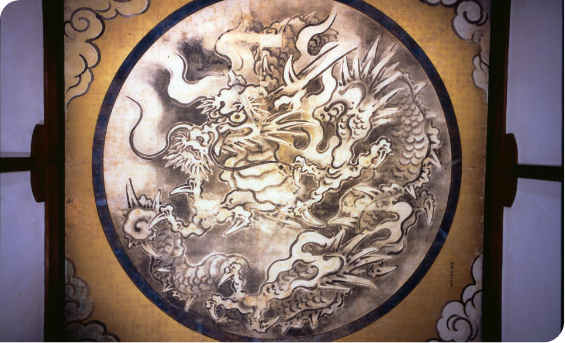
A statue of Amidanyorai is enshrined here with the successive portraits and
memorial tablets around it. It was built by the third Cloistered Imperial Prince Koben
in 1693.
The dragon is a guardian of Reiden painted by Eishuku Kano. The direction of its eyes and face appears to change when seen from different angles. This painting has a distinctive feature that the clouds in the four corners vary in color.
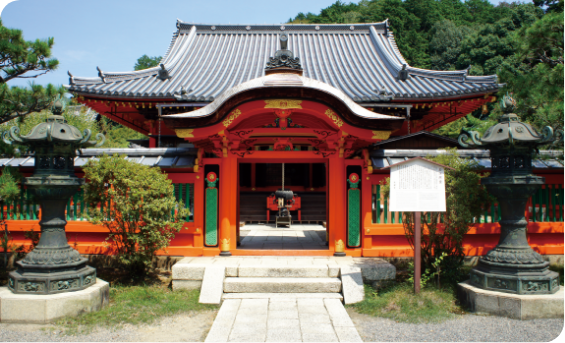
It measures about 11 meters in width and about 9 meters in length. The single-story building with a hip-and-gable roof. The principal image is a statue of Bishamonten (usually withheld from public view) that was carved by Dengyo Daishi Saicho. He worshipped three times with every stroke on sculpturing the statue. Daisojo Kokai restored it following the wishes of his deceased Daisojo Tenkai.
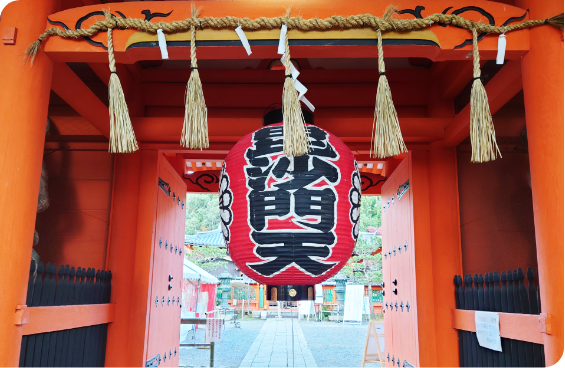
It was rebuilt in 1665. It stands at the top of the steep stone-steps as the front gate to the main hall.
